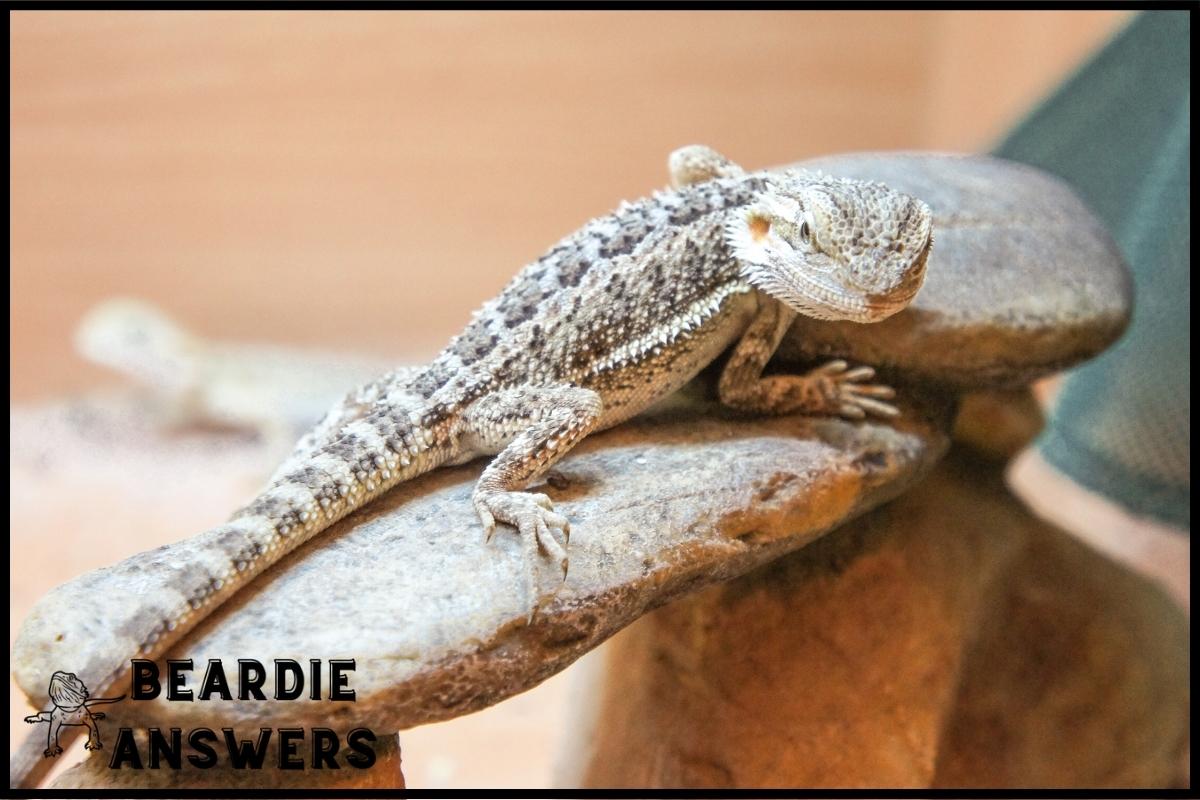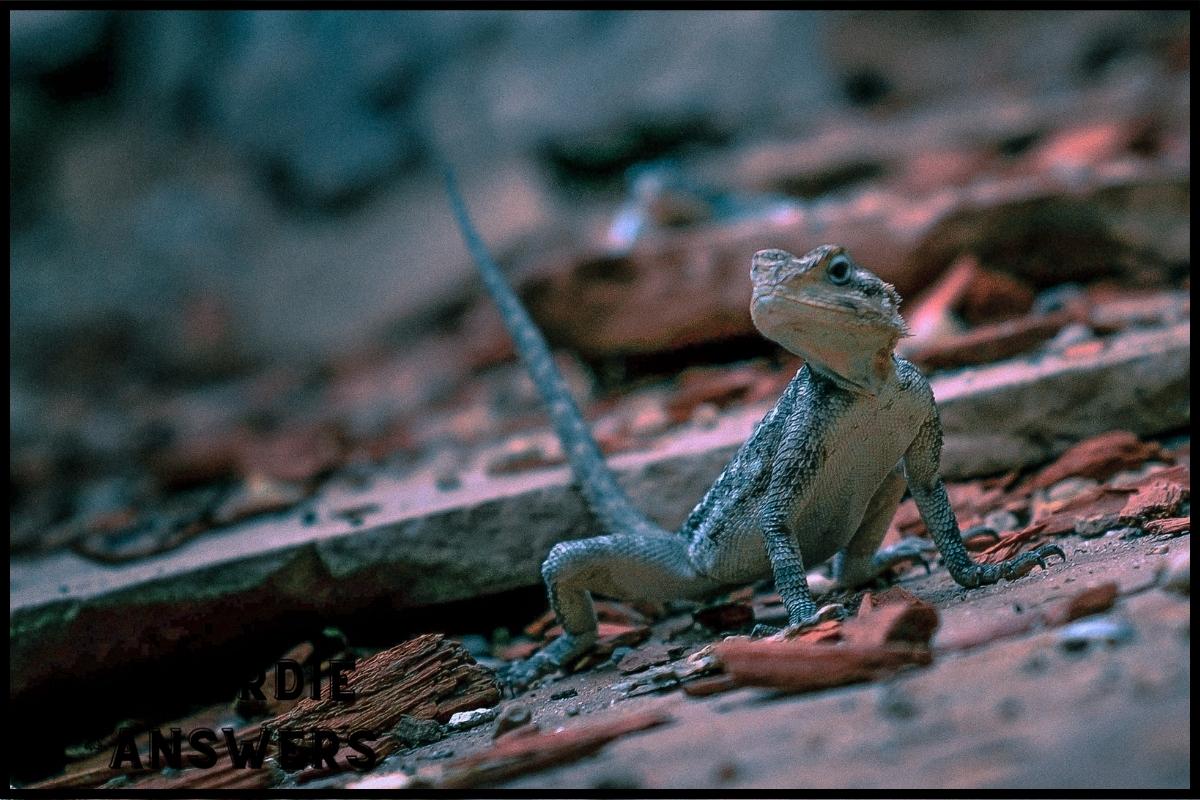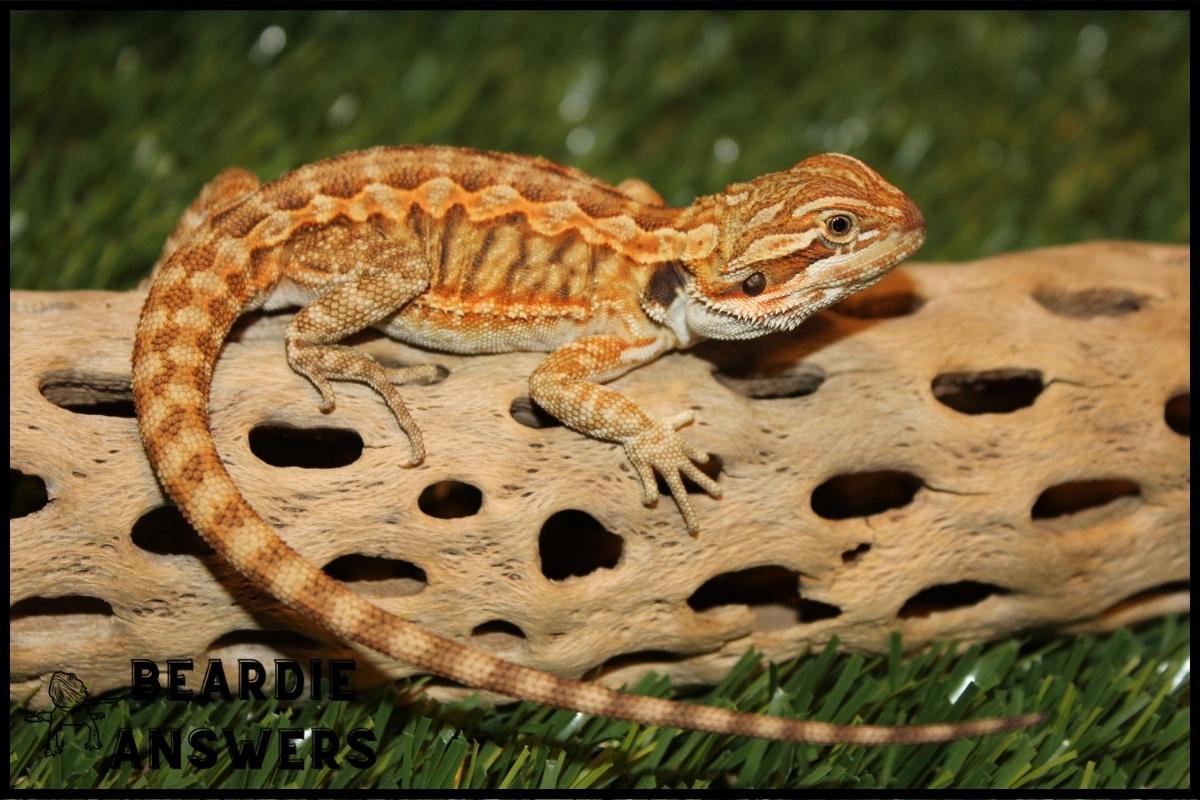[su_note note_color=”#eee”]
It’s common for pet owners to be concerned when their bearded dragon begins bobbing its head at nothing. This behavior can have multiple causes, from territoriality and mating rituals to stress or illness. Understanding why a bearded dragon is exhibiting this peculiar behavior is important in order to ensure the animal remains healthy and safe.
In this article, we’ll explore what it means when a bearded dragon head bobs, as well as how to respond appropriately.
Bearded dragons are fascinating creatures that make wonderful pets due to their friendly nature, but they do require special care compared to other reptiles. One of their most intriguing behaviors is ‘head bobbing,’ which usually arises during social interactions with other bearded dragons or out of fear or excitement.
Head bobbing isn’t exclusive to these lizards; many species use it as a form of communication! So let’s take a closer look at what it means when your furry friend starts doing some serious nodding…
What You'll Learn
What Is Bearded Dragon Head Bobbing?
Bearded dragon head bobbing is a common behavior seen in these reptiles. It may be the result of environmental triggers, physical health issues, or diet changes.
To understand why this phenomenon occurs and how to address it, bearded dragon owners should consider tracking their pet’s behaviors, making any necessary dietary adjustments, and learning proper handling techniques.
Additionally, they should also be aware of the different subtypes of bobbing that can occur which can help them better interpret what their pet might be trying to communicate.
Subtypes Of Bobbing
Back in the day, it was a known fact that bearded dragons head bobbed for all sorts of reasons. But what really are these subtypes of bobbing?
There is social signaling and prey response, dominance displays and stress responses, as well as posture shifts to consider when studying their behavior.
Social signaling involves bearded dragons bobbing to show acceptance or respect for another dragon nearby. This type of head bobs usually occurs during courtship and mating rituals between two dragons. In addition, they may use this behavior to indicate submission towards an alpha male in their group or area.
Prey response refers to the way some dragons will bob their heads while stalking potential food items such as bugs or small lizards.
Dominance displays involve rapid movements by one dragon in order to gain attention from its peers. These interactions can be aggressive but can also act as a warning sign against any intruders that might threaten them.
Stress responses occur when a particular stimulus causes increased heart rate and other physical reactions in the dragon which then manifest themselves through repetitive behaviors like head bobbing.
Lastly, postural shifts describe how different body positions display different messages among members of the species; for example, some instances of head bobbing could signify aggression whereas others could signal fear or anxiety instead.
Head bobs are used by bearded dragons to communicate with each other on multiple levels – whether it’s for pleasure, defense, or even distress!
Reasons For Head Bobbing In Bearded Dragons
Head bobbing in bearded dragons can further be broken down into subtypes, each signifying a different behavior or emotion. The most common types are territorial and mating head bobs, which indicate the dragon is feeling threatened or looking for a mate respectively.
To understand why these behaviors occur, it’s important to look at how they live and their unique housing requirements, diet preferences, handling practices, temperature regulation and light exposure needs.
A beardie’s enclosure should mimic the warm desert environment of its natural habitat as closely as possible. This means providing an appropriate size terrarium with substrate that retains heat well like sand or tile flooring, plenty of rocks for basking on under a powerful UVB bulb, water dishes big enough for soaking in and hiding spots made from logs or caves. Additionally, some owners may choose to provide extra humidity through misting or vaporizers if required by their particular species. Without adequate environmental conditions provided within the home, stress levels can increase leading to excessive head bobbing.
In addition to suitable living conditions, proper nutrition is essential for any pet reptile including bearded dragons. A balanced diet usually consists of fresh vegetables such as spinach and kale alongside occasional insects like crickets and mealworms as treats. Overfeeding can lead to health issues so portion sizes should always be monitored when feeding your dragon; another factor which could potentially contribute to stress-related behaviors like head bobbing if not taken care of properly.
The next step in understanding why head nodding occurs in beardies involves evaluating their interactions with humans. As prey animals used to being handled regularly by predators in the wild it’s important not to rush into contact but instead allow them time to adjust first before attempting gentle pick ups while supporting their body weight correctly – too much handling can also cause distress resulting in this type of behavior .
Finally ensuring optimal temperatures between 75-90°F (24-32°C) during the day with a slight dip at night is crucial for maintaining good health since cold drafts can easily reduce appetite causing further problems down the line if left unchecked. Identifying territorial and mating behaviors will become easier once all these aspects have been considered carefully making sure your pet has everything he/she needs for optimum wellbeing!
How To Identify Territorial And Mating Behaviors
Head bobbing in bearded dragons is an undeniable show of power and dominance! Not only does this behavior indicate territoriality, but it can also signal mating behaviors. It’s essential for any beardie owner to be able to identify these social cues so they can better understand the needs of their pet.
Bearded dragon courtship rituals involve a variety of environmental triggers that may prompt head bobbing. During breeding season, male dragons may display more aggressive posturing as part of a dominance display in order to establish territory or attract mate competition from other males. This is usually combined with arm waving, circling, and chin rubbing.
Females often respond with subtle head bobs of their own during courtship displays. With all this intricate behavior at play, it’s important for owners to keep an eye on their pets’ movements—even if there doesn’t seem to be anything around!
Beardies who are stressed will sometimes engage in head bobbing too, so understanding the difference between stress-induced behavior and territorial/mating behavior is key. In some cases, reducing stress levels through proper nutrition and environment changes can help reduce head bobbing due to anxiety.
How To Reduce Stress In Bearded Dragons
Creating a calming environment for your bearded dragon can be an effective way to reduce head bobbing. Providing the right temperature, humidity and light cycles will ensure that they feel safe in their enclosure.
Additionally, make sure to handle them gently and with care using proper techniques. Making changes to their diet such as adding more fresh vegetables or providing special toys may also help keep them stimulated and less likely to display territorial behaviors like head bobbing.
It’s important to remember that even small changes can have a big impact on reducing stress levels in bearded dragons. With these steps taken, you should start to see a reduction in your bearded dragon’s head bobbing behavior over time.
Moving forward we need to consider the long-term impacts of this behavior on health and wellbeing.
Long-Term Impact Of Head Bobbing
Head bobbing in bearded dragons can have long-term effects depending on the age of the dragon, its gender, and the intensity, frequency, and duration of the head bobbing.
For example, it’s been observed that older bearded dragons tend to engage in more intense head bobbing bouts than younger ones. Additionally, males are known to show higher levels of aggression with their head bobs compared to females. This can be seen through increased intensity and longer durations of each bout.
The behavior may also affect a dragon’s health over time if left unchecked. Head bobbing episodes that occur too frequently or last for prolonged periods can lead to exhaustion or even injury due to excessive strain placed on the neck muscles.
As such, it is important for owners to monitor these behaviors regularly in order detect any changes early on so they can intervene as needed.
It is clear then that regular monitoring of head bobbing behavior is necessary for both male and female bearded dragons alike regardless of age. Intervening when appropriate can help ensure a healthy lifestyle for your pet without sacrificing normal social interactions or territorial displays.
Conclusion
In conclusion, bearded dragon head bobbing is a fascinating behavior that can indicate territorial and mating behaviors as well as stress. It’s important to be able to identify the type of bobbing so that you can take the appropriate steps to support your pet if needed.
The impact of head bobbing on long-term health should not be overlooked either. While it may appear harmless at first, prolonged periods of stress can have serious implications for bearded dragons in the future. Therefore, it’s advisable to pay attention to your pet’s behavior and act accordingly when they display signs of stress or aggression.
Ultimately, understanding how to recognize different types of head bobbing in bearded dragons will help ensure their physical and emotional wellbeing.
After all, isn’t our goal as owners to give them the best quality of life? How do we make sure this happens?

Hi! My name is Bryan, I am the “one behind the words” here are BeardieAnswers.com. I believe that providing quality care and nutrition is the best way to ensure the health of your pet. Every beardie is special and deserves the best care and attention. If you have questions about your bearded dragon, please don’t hesitate to ask! View My Full Author Page




